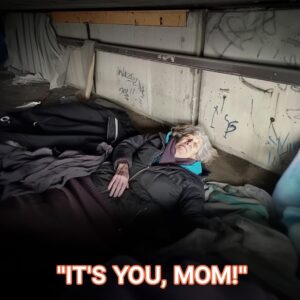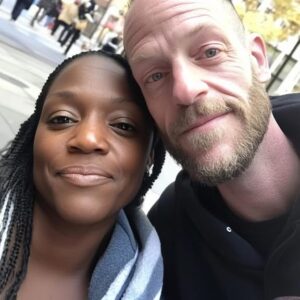Tragedy in Two Acts: Virginia Beach Traffic Stop and UPMC Memorial Hospital Shooting
I. Introduction
In recent days, communities in Virginia and Pennsylvania have been forced to confront the devastating realities of violence against public servants and healthcare workers. Two separate incidents—a fatal traffic stop in Virginia Beach and a harrowing attack at UPMC Memorial Hospital in York—have left families, colleagues, and citizens mourning the loss of brave officers who gave their lives in the line of duty. As authorities work tirelessly to piece together the circumstances surrounding these tragedies, tributes and heartfelt condolences pour in from around the country.
This detailed report presents a timeline of events, eyewitness accounts, official statements, and an analysis of the broader implications of these incidents. The goal is not only to inform but also to honor the memory of those who were lost and to highlight the sacrifices made by first responders in the service of their communities.
II. Virginia Beach Traffic Stop: A Routine Encounter Turns Fatal
A. The Fateful Night
On the evening of February 21, 2025, at approximately 11:27 p.m., Virginia Beach police officers Cameron Girvin and Christopher Reese were conducting what appeared to be a routine traffic stop. Officers had observed a blue Hyundai Sonata displaying an expired license plate and initiated a stop on Silven Court—a quiet residential dead-end street. According to preliminary reports, the driver initially refused to pull over, only coming to a stop after reaching the dead end.
As the officers began their approach, the situation quickly escalated. The driver became increasingly argumentative, repeatedly ignoring commands to exit the vehicle. Despite multiple requests, he only reluctantly stepped out after a prolonged standoff. It was at that moment that a struggle ensued.
Eyewitnesses later reported that during the physical altercation, the driver suddenly produced a handgun from his pocket. In a swift and chaotic turn of events, he opened fire, striking both Officer Girvin and Officer Reese. Shockingly, even as the officers lay defenseless on the ground, the suspect continued to fire additional shots, fatally wounding them before fleeing the scene.
B. Immediate Aftermath and Response
Within minutes of the shooting, backup units from the Virginia Beach Police Department converged on the scene. Officers launched an intensive search for the fleeing suspect, determined to bring the perpetrator to justice and to prevent further violence. Their efforts proved successful when the driver was located later that night in a shed behind an apartment complex near the scene of the shooting.
The suspect, identified as 42-year-old John McCoy III, was found dead from an apparent self-inflicted gunshot wound. McCoy was known to be a convicted felon, and investigators have begun to examine his criminal history in an effort to piece together a motive for his actions.
C. Official Statements and Community Reaction
Virginia Beach Police Chief Paul Neudigate addressed the public during an emotional press conference, offering details on the tragic incident and expressing deep sorrow over the loss of Officers Girvin and Reese. “We are all hurting,” Chief Neudigate said, “families have lost loved ones in the prime of their lives, and our entire community is in mourning.” The press conference, held at a makeshift media center near the affected area, served as a solemn reminder of the risks that law enforcement officers take every day in the pursuit of public safety.
Tragically, Officer Christopher Reese, aged 30, was pronounced dead shortly after midnight at Sentara Princess Anne Hospital, where he was surrounded by family, friends, and fellow officers. Officer Cameron Girvin, only 25, succumbed to his injuries at Virginia Beach General Hospital around 4:30 a.m. Both men were remembered by colleagues and community members as dedicated public servants who exemplified bravery and commitment to duty.
Eyewitness accounts from local residents painted a picture of a community shaken to its core. Marcus Burton, a nearby resident, recounted the moment he realized something was terribly wrong: “I looked out my window and saw several gunshots. At first, I thought it was just some noise in the distance, but then I saw police cars everywhere and a man walking through the alley. It was surreal.” Another resident, Micka Carden, expressed her disbelief at the violence, noting, “This is a quiet community. My husband and I both served in the military, and we have the utmost respect for law enforcement. It’s just heartbreaking that this happened.”
In a statement shared on social media by the Virginia Beach Fire Department, first responders extended their condolences: “Our hearts are filled with profound sadness and sorrow this morning upon learning of the tragic loss of two of our brothers in blue. We extend our deepest condolences to the families and colleagues of Officers Girvin and Reese.”
The community, already reeling from the news, found solace in messages of support from across the nation. Tributes poured in from fellow officers, local officials, and citizens who remembered the fallen officers as heroes who paid the ultimate price in service to their city.
III. UPMC Memorial Hospital Shooting: Violence in a Place of Healing
A. The Unfolding Crisis
On the same day that the Virginia Beach tragedy unfolded, another harrowing incident shook the nation—this time within the walls of UPMC Memorial Hospital in York, Pennsylvania. In a sequence of events that has left patients, staff, and visitors in shock, a gunman stormed the hospital’s intensive care unit (ICU), triggering a violent confrontation that resulted in multiple casualties.
According to official reports, the suspect, identified as 49-year-old Diogenes Archangel Ortiz, entered UPMC Memorial Hospital carrying a bag containing a handgun and zip ties. The suspect’s actions were deliberate; he appeared to have targeted the ICU specifically. Initial accounts indicate that Ortiz had been in contact with the ICU department in the week prior, reportedly regarding a medical matter involving another individual. This connection has raised questions about whether the attack was premeditated and targeted rather than a random act of violence.
B. The Hostage Situation and Deadly Shootout
The situation at UPMC Memorial Hospital escalated rapidly. As the suspect moved through the hospital corridors, he took several staff members hostage, effectively barring officers from breaching the ICU. In a desperate bid to regain control, police officers engaged in a tense standoff with the gunman. Witnesses described the scene as chaotic—nurses and doctors hurriedly moving through the hallways, patients being ushered into safe areas, and the steady hum of emergency responders coordinating their efforts.
When Ortiz emerged into a hospital hallway accompanied by a staff member still held at gunpoint, the responding officers opened fire. In the ensuing shootout, Ortiz was killed, and multiple individuals sustained gunshot wounds. Among those who lost their lives was West York Borough Police Officer Andrew Duarte—a six-year veteran of law enforcement known for his exemplary service. Officer Duarte, only 29 years old at the time of his death, had previously served with distinction at the Denver Police Department, specializing in DUI and drug recognition enforcement. His sacrifice was widely mourned, and he was posthumously honored for his heroism.
In addition to Officer Duarte, several other law enforcement officers were injured, though their conditions were reported as stable. The attack also left a doctor, a nurse, a custodian, and a fourth hospital employee injured. The severity of the incident has prompted a full-scale investigation by local authorities, as well as state and federal agencies.
C. Eyewitness Accounts and Reactions
Eyewitnesses at UPMC Memorial Hospital provided harrowing accounts of the attack. Jayden Robertson, who was visiting a family member at the hospital, recalled hearing an announcement over the intercom about an intruder with a weapon. “At first, I thought it was just a security alert,” Robertson said, “but then I saw police cars arriving and officers rushing into the building. That’s when I realized the situation was far more serious than we’d been led to believe.”
Betsy Small, another visitor at the hospital, described the moment of panic as she attempted to make sense of the unfolding chaos. “I was visiting my mother when I heard strange noises and saw people running,” she recalled. “Then, an announcement came over the intercom that the hospital was on lockdown. I took cover near a window and prayed that everyone would be safe.” For over an hour, the hospital was enveloped in a state of high alert as medical staff and law enforcement worked together to secure the building and tend to the wounded.
The attack at UPMC Memorial Hospital also prompted an outpouring of condolences and support from local and state officials. State Senator Dawn Keefer and State Representative Seth Grove released a joint statement expressing their sorrow and solidarity: “We are deeply saddened by the tragic shooting at UPMC this morning. Our hearts go out to the victims, their families, and all those affected by this senseless act of violence.” Governor Josh Shapiro of Pennsylvania also paid tribute to Officer Duarte, describing him as “the best of us” and acknowledging his extraordinary courage in the face of danger.
In a statement issued by the West York Borough Police Department, community members were urged to honor Officer Duarte’s memory by laying flowers at the department’s steps. “Our community grieves the loss of a hero,” the department stated on Facebook. “We ask that the community come together in solidarity, respect, and prayer as we mourn the passing of Officer Duarte and support his family.”
IV. The Human Toll: Community Impact and Reflections
A. The Emotional Aftermath for Families and Colleagues
In both Virginia Beach and York, the aftermath of these violent incidents has left indelible scars on the communities involved. For the families of the fallen officers, the loss is immeasurable. In Virginia Beach, colleagues and friends of Officers Girvin and Reese have taken to social media and public vigils to express their grief. A close associate of Officer Girvin shared a heartfelt tribute online: “Cameron wasn’t just a coworker—he was a brother, a friend, and an inspiration. His loss leaves a void that can never be filled.” Similar sentiments were echoed by members of the West York Borough Police Department and other law enforcement agencies, where the sacrifices made by officers in the line of duty are honored with deep reverence.
The impact on the victims’ families extends beyond grief; it also brings forth challenging questions about safety, accountability, and the support systems available for those who risk their lives daily. In Virginia Beach, families are grappling with the sudden loss of a loved one, and community support has become crucial in providing comfort and reassurance during this dark period. Similarly, in York, the tragedy at UPMC Memorial Hospital has mobilized local support networks, with community members coming together to provide solace to the families of both the deceased officer and the injured.
B. Firsthand Accounts: The Voices of Witnesses
Witnesses from both incidents have provided candid accounts that offer insight into the chaos and emotional intensity of these events. Marcus Burton, a resident near the Virginia Beach incident, described the shock he experienced upon seeing police vehicles and a solitary figure in the alley. “I couldn’t believe my eyes,” he recounted. “It was like something out of a movie, but it was all too real. My heart sank as I realized the magnitude of what had happened.”
Similarly, residents near UPMC Memorial Hospital expressed their disbelief at the unfolding violence. Betsy Small, recalling her experience during the hospital lockdown, described a scene of utter confusion and fear. “I remember looking out the window and seeing officers rushing about, while announcements over the intercom sent waves of panic through everyone,” she said. “It was a moment that reminded me how fragile life truly is, and how quickly things can change.”
These firsthand accounts serve as a stark reminder of the human toll exacted by violence and the courage exhibited by those who risk everything in the name of public safety. They also underscore the importance of community solidarity in times of crisis, as citizens and officials alike come together to support one another in the face of tragedy.
V. Official Reactions: Leadership Speaks Out
A. Statements from Law Enforcement Leaders
In the wake of the Virginia Beach incident, Virginia Beach Police Chief Paul Neudigate held a press conference that was both emotional and resolute. Chief Neudigate spoke at length about the profound loss experienced by the department and the community. “Our officers gave everything in service of their city,” he said. “We are all hurting right now. Families have lost loved ones in the prime of their lives, and the impact of this tragedy will be felt for years to come.” His words resonated deeply with a public that had long admired the bravery of law enforcement officers, reinforcing the sense that no one is ever truly safe from the risks inherent in serving the community.
The chief’s remarks were underscored by vivid descriptions of the final moments for Officers Girvin and Reese. He noted that Officer Reese, 30, was pronounced dead shortly after midnight at Sentara Princess Anne Hospital—surrounded by family and fellow officers—while Officer Girvin, 25, passed away at Virginia Beach General Hospital several hours later. These details, conveyed with compassion and clarity, served as a solemn reminder of the sacrifices made by these men and the heavy burden borne by those who follow in their footsteps.
B. Political and Community Leaders Weigh In
In addition to law enforcement officials, political leaders have also voiced their condolences and concerns. In Pennsylvania, Governor Josh Shapiro paid tribute to Officer Andrew Duarte, describing him as “the best of us” and highlighting his willingness to confront danger head-on. “Officer Duarte’s commitment to protecting our community is an inspiration,” Governor Shapiro remarked on social media. “Today, we honor his sacrifice and the bravery of all our law enforcement officers.”
State Senator Dawn Keefer and State Representative Seth Grove issued a joint statement addressing the UPMC Memorial Hospital shooting. “We are deeply saddened by the senseless violence that took place at UPMC this morning,” they stated. “Our hearts go out to the victims, their families, and to every individual affected by this tragedy. We stand united in our resolve to ensure that justice is served and that our communities remain safe.”
Such statements, coming from the highest levels of government, underscore the gravity of the situation and the collective commitment to supporting those who have lost their lives while serving others.
VI. Medical Perspectives: Managing Crisis and Ensuring Recovery
A. Updates on Pope Francis’ Health and Broader Health Crises
While the tragedies in Virginia Beach and at UPMC Memorial Hospital have captured the nation’s attention, they are part of a broader landscape of challenges facing our society—including health crises among our most revered leaders. Recently, Pope Francis has also faced significant health issues that have required intensive medical care. On February 23, 2025, amidst ongoing health challenges, the Pope took to social media to share two heartfelt messages, urging his followers to embrace love, courage, and solidarity.
In his messages, Pope Francis expressed gratitude for the global outpouring of support and called on his followers to transform adversity into an opportunity for kindness. These messages, along with detailed updates from the Holy See Press Office regarding his condition, serve as a reminder of the pervasive nature of crisis and the ways in which communities—both religious and secular—rally together in times of need.
B. The Medical Response to the Virginia Beach and UPMC Incidents
In Virginia Beach, the medical response following the tragic shooting was swift and focused. Officers who were injured received immediate treatment, though, tragically, both Officers Girvin and Reese ultimately succumbed to their injuries. Hospital staff worked diligently to stabilize patients and to support the families of the fallen officers during a time of overwhelming grief.
At UPMC Memorial Hospital, the attack triggered a massive emergency response. Medical teams, already stretched thin by the demands of daily patient care, had to rapidly adapt to a scenario of mass casualties. In addition to the loss of Officer Andrew Duarte, multiple staff members and civilians sustained injuries. Doctors, nurses, and first responders collaborated closely, using every resource at their disposal to manage the crisis and to prevent further harm. The medical response was characterized by extraordinary heroism and professionalism—a testament to the resilience of healthcare workers in the face of violence.
VII. Analysis and Broader Implications
A. The Impact on Community Safety and Public Trust
The incidents in Virginia Beach and at UPMC Memorial Hospital have raised pressing questions about public safety and the challenges faced by our law enforcement and healthcare systems. The tragic loss of life in Virginia Beach is a stark reminder that even routine encounters can escalate into deadly violence. It forces us to consider the risks that officers face every day and to acknowledge the heavy price that is sometimes paid in service of our communities.
Similarly, the shooting at UPMC Memorial Hospital highlights the vulnerability of places that are meant to be sanctuaries of healing and care. The targeted nature of the attack—specifically in the intensive care unit—suggests that even in environments designed for compassion and recovery, the specter of violence can intrude unexpectedly. Both incidents have spurred calls for increased support for first responders, enhanced security measures, and more comprehensive mental health and crisis intervention strategies.
B. The Role of Media, Transparency, and Public Accountability
In the wake of these tragedies, the role of the media in providing timely, accurate, and transparent information has proven to be critical. Detailed updates from the Virginia Beach Police Department, the Holy See Press Office, and other official sources have helped to keep the public informed while also honoring the memories of those who have lost their lives. This level of transparency is essential in building public trust and ensuring that communities are able to respond appropriately in times of crisis.
Furthermore, the public nature of these updates has encouraged an outpouring of support and solidarity from citizens, community leaders, and political officials alike. Social media platforms, traditional news outlets, and community forums have all played a role in shaping the narrative of these events—ensuring that the sacrifices of the fallen are recognized and that calls for justice and reform are heard.
VIII. Personal Stories and Testimonials
A. Remembering the Fallen: Tributes and Heartfelt Condolences
Among the many voices that have risen in tribute to the fallen officers are those of colleagues, family members, and community friends. A close friend of Officer Girvin shared on social media, “Cameron was more than an officer—he was a brother and a friend. His courage and dedication will never be forgotten.” Similarly, family members of Officer Reese expressed their grief and pride in the sacrifices he made, with heartfelt messages that resonated deeply across the community.
In West York, the loss of Officer Andrew Duarte has also been deeply felt. A fellow officer described him as “a beacon of hope and courage,” someone who had dedicated his life to protecting others and who now left behind a legacy of unwavering commitment. The West York Borough Police Department has organized memorials and vigils, urging the community to come together in remembrance and in solidarity with the families who continue to grieve.
B. Voices from the Frontline: Eyewitness Accounts
Eyewitnesses from both incidents have provided stirring accounts of the chaos and heroism witnessed on those fateful nights. Marcus Burton, who observed the Virginia Beach scene from his window, recalled, “I looked out and saw a flurry of activity—police cars, a solitary figure in the alley—and I knew immediately that something was terribly wrong. It was a moment I will never forget.” Similarly, visitors at UPMC Memorial Hospital described the panic and confusion as security measures were activated and officers raced to secure the building. These firsthand accounts, though harrowing, offer a glimpse into the human dimension of these tragedies—a reminder that beyond statistics and official statements, real lives are affected in profound ways.
IX. Looking Ahead: Policy Implications and Calls for Reform
A. Enhancing Security for Law Enforcement and Healthcare Facilities
In response to these tragic events, policymakers and community leaders are calling for comprehensive reviews of current security protocols. In Virginia Beach, discussions are underway regarding additional training for officers in de-escalation techniques and improved measures for responding to armed confrontations during traffic stops. Meanwhile, at UPMC Memorial Hospital, administrators are considering enhanced security protocols, including stricter access controls and increased on-site law enforcement presence, to safeguard both patients and staff.
B. Supporting Mental Health and Community Outreach
Beyond physical security measures, there is a growing recognition of the need to support the mental and emotional well-being of first responders and healthcare workers. Programs that provide counseling, peer support, and crisis intervention services are being expanded in many jurisdictions. These initiatives are critical in helping those on the front lines cope with the intense pressures and traumatic experiences they face on a daily basis.
C. Fostering Transparency and Accountability
Both the Virginia Beach and UPMC incidents underscore the importance of transparency in government and public safety. Ongoing investigations and detailed public updates not only help build trust among community members but also ensure that any systemic issues are identified and addressed. Officials from both cases have pledged to work closely with independent oversight bodies to review procedures and prevent similar tragedies in the future.
X. Conclusion
The tragic events in Virginia Beach and at UPMC Memorial Hospital serve as painful reminders of the risks inherent in public service and the unpredictable nature of violence. As communities grapple with the loss of brave officers and the challenges posed by such attacks, the call for justice, reform, and solidarity grows louder.
In Virginia Beach, Officers Cameron Girvin and Christopher Reese gave their lives in the line of duty, sacrificing everything to protect the public. Their memory will forever be honored by those who serve and by the community they vowed to protect. Similarly, in York, the loss of Officer Andrew Duarte and the trauma experienced by healthcare workers and patients at UPMC Memorial Hospital stand as stark reminders of the cost of violence—and of the courage required to confront it.
As officials continue to investigate these incidents and as policy discussions unfold, it is imperative that we remember the human stories behind the headlines. We must honor the sacrifices of our fallen heroes, support those who are injured, and work tirelessly to ensure that measures are put in place to prevent future tragedies.
The path forward demands not only accountability but also compassion—both for those who serve and for those affected by violence. It is a reminder that in times of crisis, communities must come together, drawing on the strength of shared resolve to rebuild and to heal.
In the wake of these incidents, our thoughts remain with the families, colleagues, and communities that have been forever changed. May the memories of Officers Girvin, Reese, and Duarte inspire us to strive for a safer, more just society, where every act of bravery is honored and every voice is heard.
XI. Final Reflections
These tragedies, unfolding in different corners of our nation, have once again highlighted the dual imperatives of security and accountability in public institutions. They have brought to light the immense sacrifices made by our law enforcement officers and healthcare professionals—individuals who, despite facing unimaginable challenges, continue to serve with unwavering dedication.
As we reflect on the events of that fateful night in Virginia Beach and the harrowing attack at UPMC Memorial Hospital, we are reminded that the safety of our communities is a collective responsibility. It is incumbent upon us all—citizens, policymakers, and leaders alike—to ensure that those who protect us are themselves protected. This means investing in advanced training, improved security measures, and robust support systems that address both physical safety and mental well-being.
Furthermore, the transparency exhibited by officials in the aftermath of these incidents plays a crucial role in fostering public trust. By openly communicating the details of these tragedies and outlining the steps being taken to prevent future occurrences, government agencies and community leaders reinforce the notion that accountability is essential—even in the face of overwhelming adversity.
The stories of Officer Girvin, Officer Reese, and Officer Duarte are not just statistics or headlines; they are profound testaments to the courage and sacrifice of individuals who dedicated their lives to serving others. Their legacies, while marked by tragedy, also serve as powerful motivators for reform and renewed commitment to public safety.
XII. Epilogue: A Call to Action
In closing, as we continue to process the emotional and societal impacts of these recent events, let us honor the memory of our fallen heroes by redoubling our efforts to support those on the front lines. Let us advocate for better safety measures, more comprehensive mental health programs, and increased transparency in public institutions. It is only by coming together—as a community, a nation, and a society—that we can hope to prevent future tragedies and ensure that the sacrifices of our brave public servants are never in vain.
The loss of these dedicated individuals serves as a solemn reminder that the work of safeguarding our communities is never done. As we move forward, may we carry with us a deep sense of responsibility, empathy, and commitment to building a safer, more resilient future for all.





